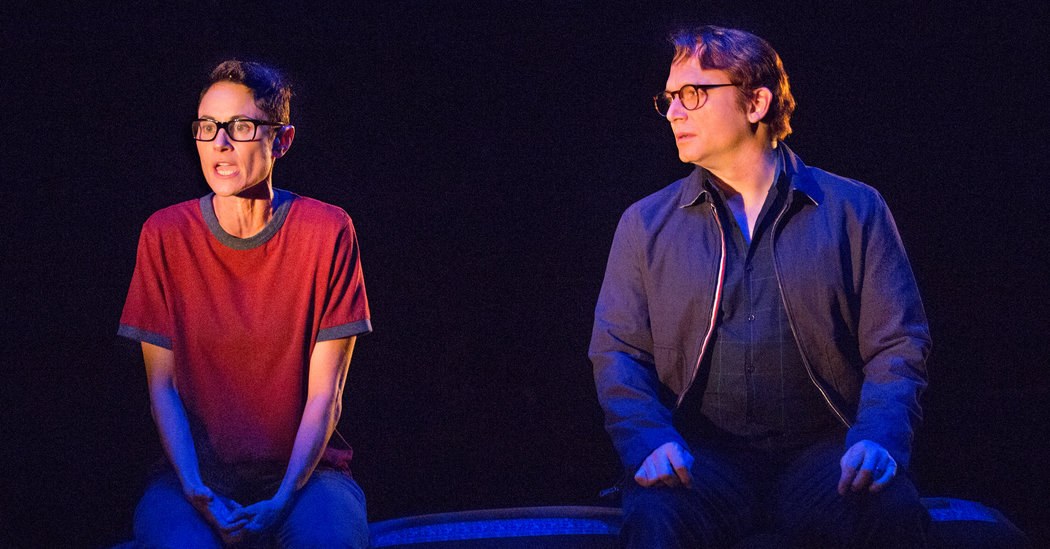It’s been a while since last I posted. Yes, I know. Blogs are always forgotten. I would be sorry if I thought that I had offended anyone, but I’m not so self-centered to think that anyone cared that I haven’t felt the need to wax philosophically as of late. Once again, I find myself at the Thousand Islands Playhouse this summer. It is a beautiful theatre doing important work in a tiny town (Gananoque) on the St. Lawrence River. When I’m working here, I have the great fortune of staying in a cabin in the woods sans internet, where I listen to Dolly Parton, practice the banjo, watch Golden Girls DVDs, write, and read. (If that sounds as idyllic to you as it is for me, please know that I am still single.)
And so I’ve been reflecting on some of the recent plays that I’ve read in my cabin. After a recent trip to New York (where I saw some great theatre), I wanted to comment on a mini-trend that I’ve noticed in the work that I have been most excited about encountering–what I will call ‘The Performance of Thought.’ This is a hardly a new idea, so I am not claiming to “discover” it; rather, I have been particularly moved by this kind of work recently and wanted to draw the connection.
In my own writing, I tend to adhere to and be challenged by structural conceits. I love applying structural challenges or problems at the beginning of a project so that I might struggle in my writing to figure out how to solve those problems. I suppose this is a masochistic exercise as writing for the theatre is hard enough to begin with, and yet, this seems to be a common element of my process. For my musical The Way Back To Thursday, I wanted to write a contemporary musical that adhered to 19th-century rules of a song cycle. For Mockingbird which premiered at this year’s Next Stage Festival, I wanted to see if I could write for 11 characters in a single space and in real time. You get the idea…
But what has been drawing me in as of late is work with a fluid structure–work that follows tangents and functions more like our thinking than a “traditional” arc. Charlotte Corbeil-Coleman’s Scratch is a particularly great example of this kind of work because she allows the narrator to move in and out of time, telling us a story with and from her own perspective. She comments on herself, she comments on the action, and she talks about other stuff that isn’t necessarily concerned with moving the plot forward. It feels simple in its complexity, but it also feels natural I think, because it is natural in the way that it connects with our patterns of thinking. The striking and poetic piece, The Gravitational Pull of Bernice Trimble (by Beth Graham) has a similar effect for me. The main character, Iris, narrates the play while making a casserole, weaving us in and out of the story at will. Chronology isn’t as important as emotional journey, and there is no doubt that the emotional journey is very clear in this piece. In both cases, the writers take a very difficult topic and find lightness and humour–partially through use of this structure.
What really cemented my interest in this idea was seeing the 2015 Tony Award winning musical Fun Home while in New York a few weeks ago. After listening to the soundtrack relentlessly, I wanted to catch the original production (staged in the round) before it closes on September 10. Adapted from the graphic memoir of the same name, Fun Home is a musical that explores the real life story of Alison Bechdel’s (of the famous ‘Bechdel Test‘) relationship with her gay father and her attempts to unlock the mysteries surrounding his life. Admittedly, after seeing this show I thought ‘why do we even bother to write plays now that this exists?’ because I loved it so much. But what I think I found most provocative about the play was the way the writers have played with structure. The musical moves in and out of time (with three Alisons at three different ages), telling the story as narrator Alison is remembering it. And so, like memory, it isn’t linear or realistic or logical. It’s memory. We hear about Alison’s own coming out next to a song from her childhood and it all makes sense somehow. I guess the non-linear nature of memory is linear in its own way. Either way, it works really really well on stage.
Obviously other artists have known this for quite some time. Novelists have always done this in their storytelling. And I suppose that I knew this too–I see so much theatre that I have certainly encountered this idea before (many many times). But for me, it’s just coming into focus this summer–how we think, how we tell stories about thinking, and how structure is as much an engine of storytelling as plot and character and subject matter. I have no great revelation here; I’m hoping that by writing this post I might inspire myself to work in a new way, think in a new way, and try to create work that is both important and structurally innovative.

